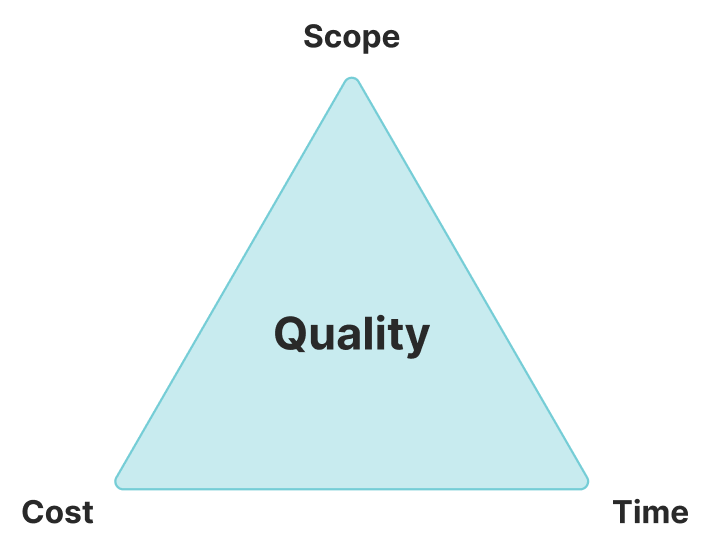
When your organization is considering website improvements, the whole internet becomes an exercise in window-shopping. After all, technology evolves quickly. The moment a new tool from Microsoft, Amazon, or another web giant shifts the industry, everyone thinks, “Can we have that?”
More than likely, you can. That’s why working with an outside development partner provides valuable bandwidth to tackle the website projects you need. But before starting down the road of building new tools, you need to understand your business needs and how to approach a development project in a way that will deliver the most benefit.
Focus Is Critical When Pursuing New Website Tools
Over time, even the most well-considered websites begin showing their age. As you browse sites like yours, new approaches that look like solutions to your organization’s digital problems grow appealing.
Drawing inspiration from other sites is helpful, and it sets any organization on a path toward improvements. But you need to consider any development project within the specific context of your business.
For example, if you want to improve the onboarding experience for your app, Dropbox provides an ideal example of seamlessly transitioning an anonymous visitor to a registered user. Of course, Dropbox spends millions of dollars to ensure its products work seamlessly, and few organizations can match their resources.
Often, pursuing the tools to serve your goals comes down to a conflict between champagne tastes and a beer budget. However, when you’re working with the right development partner, you can transform boutique custom tools into the right features for your needs. You simply have to peel off what you need in a way that suits your budget.
Understanding the Iron Triangle of Project Development
Every development project works under three constraints: Scope, time, and cost. Often referred to as the Iron Triangle, these constraints are all interrelated as your project progresses.

Inevitably, changes to one leg of the triangle makes an impact on the other two. Adjust the timing for a new feature to a tighter launch deadline, and the cost will increase while the scope of its functionality will decrease. Expand the timeline, and the reverse happens to other parts of the triangle, and so on.
Quality Remains Key for Development Projects
The framework of the Iron Triangle holds the core of every project: Quality. You and your development team should work to maximize the amount of area at the center of the triangle to ensure new tools work as they should. If you push developers to rush a project within too large of a scope, something has to give — and quality is often sacrificed.
Ultimately, you’re better off reducing scope to protect the project’s results. Remember that software is malleable and you can always add improvements after launch. “No” doesn’t mean “never.” It simply means “not right now.”
5 Tips for Productive Collaboration with Developers
You have to develop a framework for how you and your development team will work together from the start. You can ensure your organization enjoys a successful collaboration with developers by following these guidelines:
Trust Your Development Partner
As you discuss the scope and timing of your project, you can’t afford to be dishonest with your team about the budget. Organizations often hold back on revealing the budget fearing the number will magically become the cost of the project. And that’s simply not the case.
When you go shopping for a car, any sales agent will ask about your budget—because that informs the options they present. Your developers need to shape the right solution for your needs the same way.
Plus, project estimates take time and effort to produce. At Lincoln Loop, we examine our client’s sites with a fine tooth comb to understand every variable of a project. The time spent to create an estimate that was always out of budget is time that could have been spent building what you need.
Avoid Being Too Prescriptive with Developers
You may have identified every detail behind a new must-have tool for your website. But you have to allow room for developers to do what they do best. Instead, stay focused on the business outcomes you most want to see from your project.
Communication with your development team is crucial, and you should absolutely share your thoughts about what you’re looking for in a project. However, in the same way you wouldn’t tell a doctor how to treat an illness, you should be careful about telling your development team how to solve a problem.
Limit the Risk Within Your Project
As you work with your development partner to outline the goals for your project, you should be explicit with details. At Lincoln Loop, we view performance as a key focus for development. But if we deploy something without knowing your plans for its use, it could impact your whole site.
For example, we worked with a client in the video game industry who wanted users to be able to comment on the articles they posted to their site.. When the feature launched, they ran a massive promotion that the first 100 commenters would get a free copy of a hot new game title. The unplanned rush of traffic resulted in an avoidable outage.
When you provide developers all the details of how your organization will use a new feature, the more you limit the risk of unexpected outcomes.
Fail Early Rather Than Later
Though you may admire how a feature looks on another website, you have to remain responsive to your own audience. You can’t view a project as finished after it’s launched. You’re much better off gathering feedback and responding to that information with an updated, more efficient version.
Lincoln Loop is dedicated to Agile development and consistent improvement. The more feedback you can gather early, the better your ability to iterate and move forward based on that information.
Remain Flexible With Implementation Details
Flexibility is key when it comes to protecting your project’s constraints. If you start a project focused on the end goal, you will have a healthy exchange with development partners and create a project roadmap that’s within your budget and launch deadline.
There are multiple technical solutions available to meet a goal. Your development team is in the best position to tell you what details are within the project constraints of cost, scope, and time.
Successful Development Projects Start With Communication
Finding the right meeting point between scope, cost, and time for your project to launch effectively takes effort. But you will see the best results from your developers by having an honest conversation that’s focused on the problem you need to resolve.
Discussions with any team about creating new website tools requires the right framework to be productive. Rather than looking to replicate every detail of a new feature, you should start by focusing on your organization’s goals. If this sounds like a conversation that will help bring your website closer to its needs, we should talk.


